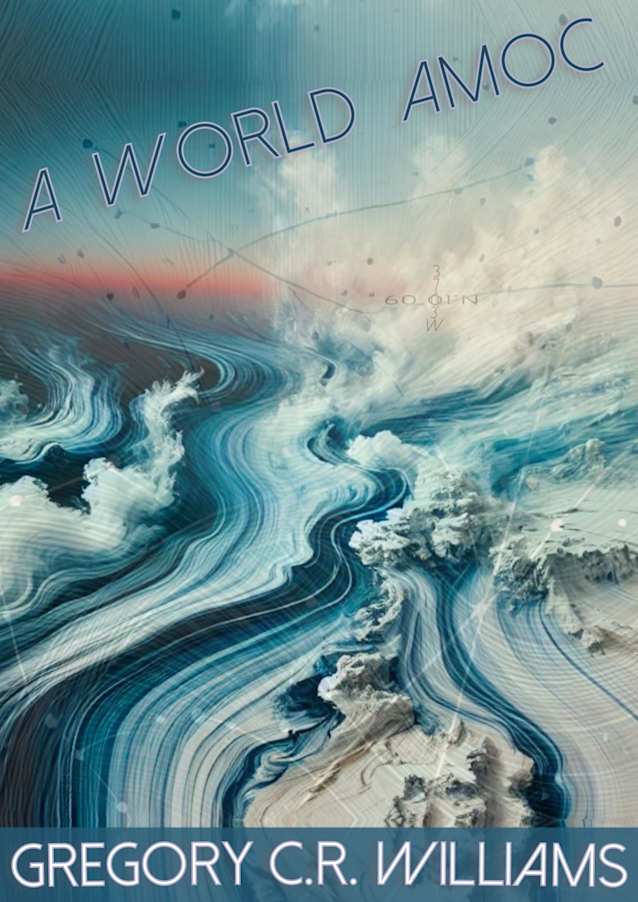A World AMOC: Dispatches from the Edges of Humanity
About
The Atlantic Meridional Overturning Circulation (AMOC), a vital ocean current shaping weather, trade, and life across continents, is faltering—a shift with profound implications. This book masterfully blends science and near-future fiction to explore how this invisible system’s potential collapse could transform lives and ecosystems globally. From northern Europe’s frost-bitten orchards to bleaching coral reefs in the tropics, each narrative underscores how interconnected our world truly is, and how fragile that connection has become.
The sea has shaped humanity for millennia, serving as a cradle of civilisation and a conveyor of trade, sustenance, and climate stability. Today, however, a fundamental pillar of ocean dynamics—the Atlantic Meridional Overturning Circulation (AMOC)—is faltering. This book combines meticulously researched, gripping fictional accounts of near-future communities with the solid foundation of real-world science to deliver a powerful message: the ocean’s health directly determines humanity’s fate.
We meet orchard farmers in northern Europe and New Zealand battling spring frosts, tropical fishermen witnessing coral bleaching, and families grappling with whether to abandon coastal homes as seas rise. These vignettes depict the ripple effects of an AMOC slowdown, which will upend weather patterns globally. It’s explored beyond a scientific dilemma—it’s a societal crisis on the humanities horizon, affecting food, livelihoods, and homes.
The Interwoven Narrative of Science and Survival
This book blends technical insights with researched and relatable human stories. Early chapters introduce communities, such as those in the Netherlands and New Zealand, which each faced the AMOC’s breakdown in different ways. Dutch residents merge centuries-old water management traditions with cutting-edge engineering to defend against surging tides. Meanwhile, New Zealand orchardists turn to Māori wisdom and innovative agriculture to cope with unseasonal weather extremes. These dual stories illustrate the universality of the crisis and the need for diverse solutions.
As the narrative expands, we see responses from an eco-tourism resort in the Caribbean, investing in coral restoration, and a city in India adapting to erratic monsoon rains. These examples show how the AMOC’s disruption creates chaos not just in coastal zones but also in landlocked regions reliant on predictable climate patterns.
Why This Book Matters Now
The AMOC’s slowdown is not a distant threat—it’s behaviour data suggests it will be crossing a tipping point as soon as mid-century, probably within your lifetime and that of your children. While debates persist over exact timelines, the scientific consensus is clear: even partial disruptions spell disaster for agriculture, infrastructure, and biodiversity. This book emphasises that the AMOC is not just an ocean current; it’s the hidden architecture underpinning global stability.
Yet amidst the peril, the narrative offers hope. Communities innovate, adapting ancient practices and modern technology. Farmers plant salt-tolerant crops, engineers design resilient coastlines, and scientists share data across continents. Each local solution contributes to a global mosaic of resilience and survival.
Why read this book now? Because it translates abstract science into tangible stakes. It reveals how ocean currents govern everyday life, from the food we eat to the storms we weather. As a warming planet accelerates the AMOC’s slowdown, this story compels us to confront our role in both the problem and its solutions. It’s a call to action, urging global cooperation and individual resolve to preserve the systems that sustain us.
